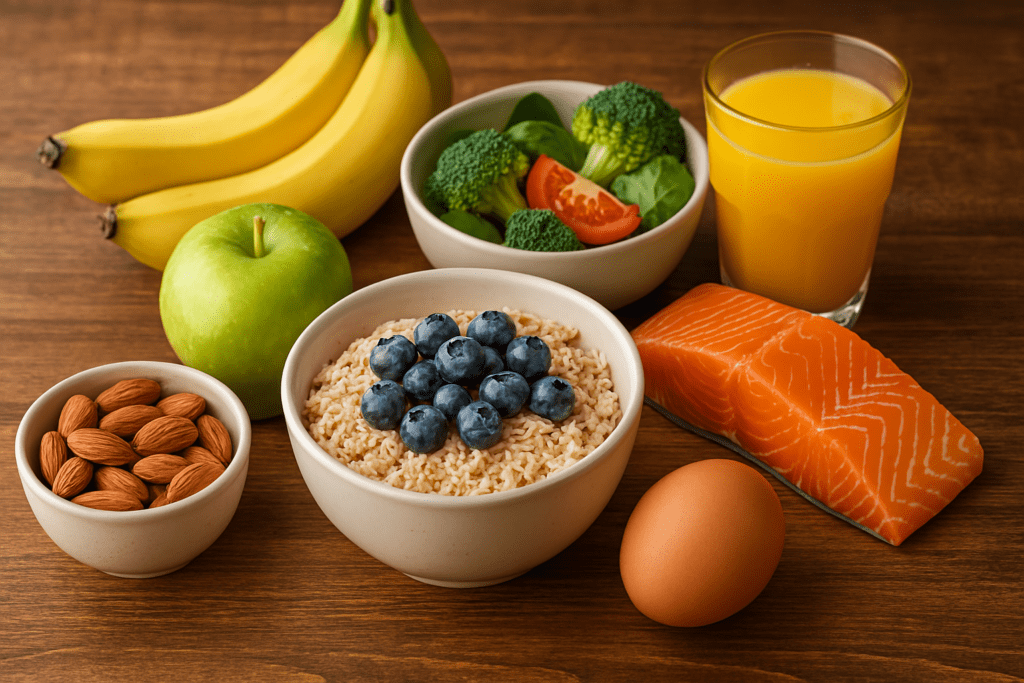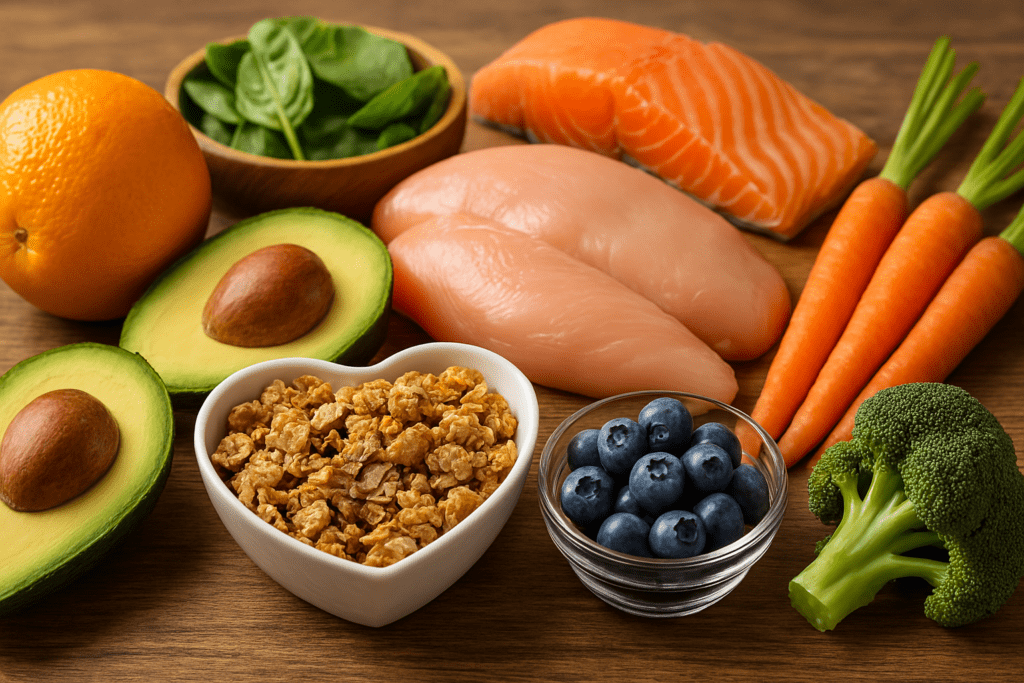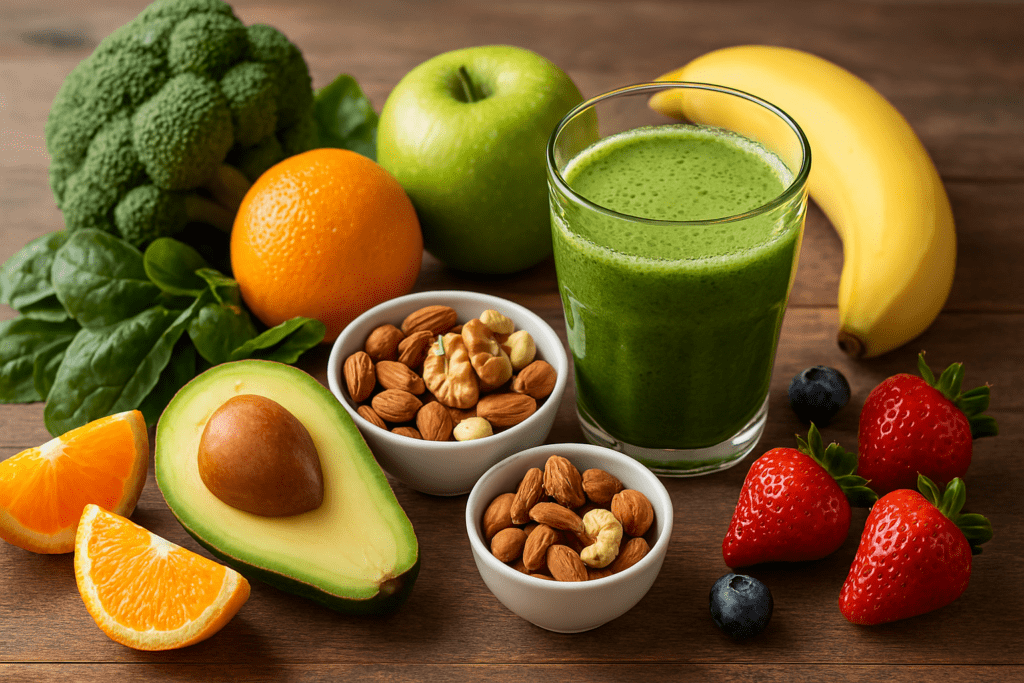In today’s fast-paced world, the demand for sustained energy has never been greater. Whether you’re juggling work, family, or simply trying to make it through a long day, it’s no wonder that so many people find themselves asking, “How can I get more energy?” While energy drinks and caffeine offer quick fixes, they often come with a price—crashes, dependency, and even long-term health consequences. Fortunately, science-backed natural strategies offer a healthier, more sustainable way to elevate your energy levels and mental sharpness. This comprehensive guide explores how to get more energy naturally, with a special focus on boosting focus, stamina, and mental clarity from morning to night.
You may also like: Best Natural Supplements and Vitamins to Improve Focus Backed by Science and Expert Insight
Understanding the Root Causes of Low Energy
Before exploring natural solutions, it’s important to understand why energy may be lacking in the first place. Chronic fatigue can stem from a multitude of causes, ranging from poor nutrition and sleep deprivation to hormonal imbalances, sedentary lifestyles, or unmanaged stress. In some cases, low energy may even be a symptom of an underlying medical condition such as thyroid dysfunction or anemia. However, for many people, the issue lies in a combination of lifestyle factors that are both modifiable and reversible. Identifying the true source of your energy slump can provide a powerful framework for implementing effective, lasting change.
Nutrition: Fueling Your Body for Peak Performance
One of the most effective answers to the question “How can I get more energy?” is to take a closer look at what you eat. The food you consume serves as your primary energy source, and its quality directly impacts your stamina, mental clarity, and overall vitality. Consuming complex carbohydrates like whole grains, legumes, and vegetables ensures a steady release of glucose, the brain’s preferred fuel. In contrast, highly processed foods laden with refined sugars can trigger spikes and crashes in energy, leaving you feeling more depleted than before.
Incorporating healthy fats and lean proteins into your meals supports brain function and muscle repair, which are critical for long-term energy. Omega-3 fatty acids, found in fatty fish like salmon and in flaxseeds, play a role in reducing inflammation and enhancing cognitive function. Likewise, vitamins and minerals such as B-complex vitamins, magnesium, and iron are essential cofactors in energy metabolism. Ensuring that your diet is rich in colorful fruits, leafy greens, nuts, and seeds helps support these vital processes.
Staying hydrated is another crucial yet often overlooked factor. Even mild dehydration can result in fatigue and impaired cognitive function. Aim to drink water consistently throughout the day, particularly if you consume caffeinated beverages or engage in physical activity. Herbal teas and water-rich fruits like cucumbers and oranges can also contribute to your hydration needs while offering additional nutritional benefits.
The Power of Sleep in Restoring Natural Energy
A well-rested body is a naturally energized one. Sleep is not just about quantity but quality. During deep sleep cycles, the body repairs tissue, consolidates memory, and resets hormonal rhythms that regulate energy levels. When sleep is disrupted or inadequate, these restorative processes are compromised, leading to sluggishness, irritability, and brain fog the following day.
If you find yourself wondering how to have energy in the morning, begin by evaluating your sleep hygiene. Establishing a consistent sleep schedule, even on weekends, helps regulate your circadian rhythm. Avoiding screens at least an hour before bed reduces exposure to blue light, which can inhibit the production of melatonin, the hormone responsible for sleep onset. Creating a sleep-conducive environment by keeping your bedroom dark, cool, and quiet also promotes deeper, more rejuvenating rest.
If you experience persistent insomnia or non-restorative sleep, it may be worthwhile to explore underlying issues such as sleep apnea, restless leg syndrome, or anxiety. Addressing these concerns through medical consultation or therapeutic interventions can significantly improve energy levels during the day.
Physical Activity: A Counterintuitive Energy Booster
While it may seem paradoxical to move more when you’re already tired, regular physical activity is one of the most effective ways to naturally elevate energy levels. Exercise stimulates the production of endorphins and increases blood flow, delivering more oxygen and nutrients to tissues and organs. These physiological changes not only improve physical stamina but also enhance mental clarity and mood.
The key is to find an activity that you enjoy and can sustain over time, whether it’s walking, swimming, dancing, or strength training. Even light movement such as stretching or yoga can provide a midday energy boost, especially when practiced during an afternoon slump. If you’re wondering how to get instant energy when tired, a brisk 10-minute walk outdoors can offer a surprisingly revitalizing effect.
Additionally, regular exercise supports better sleep and regulates stress hormones, both of which contribute to a greater sense of vitality throughout the day. Incorporating movement into your daily routine—such as taking the stairs instead of the elevator or walking during phone calls—can make a noticeable difference in your energy profile.
Mental Clarity Through Mindfulness and Meditation
Energy is not purely physical; mental fatigue can be equally, if not more, debilitating. In our hyper-connected world, constant notifications, multitasking, and digital overload can scatter attention and deplete mental resources. Practicing mindfulness and meditation can significantly improve focus and clarity, helping you feel more energized mentally and emotionally.
Mindfulness involves paying nonjudgmental attention to the present moment, which can reduce stress and increase cognitive resilience. Meditation, especially practices like focused breathing or body scans, can calm the nervous system and enhance the brain’s ability to sustain attention. When practiced consistently, these techniques have been shown to increase grey matter density in areas of the brain associated with memory, self-awareness, and learning.
If you’re seeking a sustainable solution to how to have more energy throughout the day, integrating short meditation breaks into your routine can be transformative. Even five minutes of intentional breathing or mindfulness can reset your mental state and improve decision-making, creativity, and emotional regulation.

Natural Light and Circadian Synchronization
Our bodies are intricately connected to the rhythms of nature, particularly the daily cycle of light and darkness. Exposure to natural light, especially in the morning, helps synchronize your internal clock, enhancing alertness and energy. On the other hand, insufficient daylight exposure can contribute to feelings of fatigue and low mood.
Spending time outdoors early in the day, even for just 15 minutes, can help regulate melatonin production and promote a healthy sleep-wake cycle. If you work in a windowless environment or live in a region with limited sunlight, consider using a light therapy box to simulate natural light exposure. Such interventions can be particularly helpful during the winter months or for individuals experiencing seasonal affective disorder (SAD).
Harnessing light to support your circadian rhythm is one of the most efficient ways to get energy naturally. Simple changes, such as opening blinds in the morning or taking a walk during lunch, can make a substantial difference in how you feel throughout the day.
Strategic Use of Natural Supplements
While whole foods should form the foundation of your energy strategy, certain natural supplements can offer targeted support when needed. Adaptogens like Rhodiola rosea, Ashwagandha, and Panax ginseng have been studied for their ability to reduce fatigue, enhance resilience to stress, and support cognitive function. These herbs modulate the stress response and may improve endurance without the jitteriness associated with stimulants.
Vitamin B12 and iron are two common nutrients associated with low energy, particularly in individuals following plant-based diets or those with absorption issues. Supplementation, when guided by lab testing and medical advice, can help restore levels and alleviate fatigue. Magnesium also plays a role in over 300 enzymatic reactions, many of which are involved in energy production and muscle function.
While these natural options can be powerful allies, it’s essential to consult a healthcare provider before starting any new supplement regimen. Personalized guidance ensures safety and effectiveness, especially if you have underlying health conditions or are taking medications.
Managing Stress for Long-Term Energy Preservation
Chronic stress can drain your energy reserves more quickly than almost any other factor. When the body is under prolonged stress, it produces elevated levels of cortisol, a hormone that, over time, can disrupt sleep, impair immunity, and deplete mental and physical stamina. Learning to manage stress effectively is therefore integral to sustaining long-term energy and preventing burnout.
One effective strategy is to establish boundaries around work and personal time, creating space for rest and renewal. Engaging in activities that bring joy—such as creative hobbies, meaningful conversations, or time in nature—can recharge your emotional batteries. Deep breathing exercises, progressive muscle relaxation, and journaling are other practical tools that can calm the nervous system and refocus your mind.
If you’ve ever found yourself asking, “What is the most efficient way to get energy without sacrificing your health?” the answer may lie in how well you manage your stress levels. By reducing unnecessary mental clutter and emotional strain, you conserve the energy needed to thrive in all areas of life.
Creating a Daily Routine That Supports Energy
Consistency is a powerful force when it comes to energy management. Rather than relying on sporadic bursts of motivation or occasional health efforts, building a daily routine that prioritizes energy-supportive habits can yield far better results. Start by anchoring your day with a nutritious breakfast that includes protein, fiber, and healthy fats—this helps regulate blood sugar and reduces mid-morning crashes.
Follow this with strategic planning: tackle mentally demanding tasks when your focus is naturally higher, usually mid-morning or early afternoon. Build in time for breaks, movement, hydration, and even short naps if needed. These moments of intentional rest and renewal can dramatically enhance productivity and prevent energy slumps later in the day.
End your day with rituals that promote quality sleep—this might include a warm bath, light reading, or a brief gratitude practice. A well-structured routine answers the question of how to have more energy throughout the day not with a single tactic, but with a cohesive rhythm that respects your body’s natural needs.

Frequently Asked Questions: How to Get More Energy Naturally
1. How can I get energy quickly without relying on caffeine or sugar?
Getting energy quickly without stimulants involves engaging your body and mind in ways that create a natural physiological response. Cold exposure, such as a splash of cold water on your face or a brief cold shower, can activate the sympathetic nervous system and increase alertness. Consuming a small snack with a balanced mix of complex carbs and protein—like a banana with almond butter—can also provide fast, stable energy. Deep breathing techniques, especially those that emphasize quick inhalations and extended exhalations, can help oxygenate your brain and body, delivering a sense of immediate vitality. These approaches are excellent alternatives when you’re wondering how to get instant energy when tired but want to avoid a crash later.
2. What is the most efficient way to get energy during a midday slump?
Midday energy dips are common due to natural circadian rhythms and blood sugar fluctuations. One of the most efficient ways to get energy at this time is through controlled movement—a short walk outside combines natural light exposure, physical activity, and a mental reset. Pairing this with hydration and a quick breathing exercise can amplify results. Strategic napping, limited to 10–20 minutes, can also dramatically improve focus and stamina without affecting nighttime sleep. When asking what is the most efficient way to get energy during a slump, consider combining these methods to synergize their effects and avoid over-relying on coffee or snacks.
3. How can I get more energy as I age, especially in my 40s and 50s?
Energy needs shift with age, particularly due to hormonal changes, slower metabolism, and increased recovery time. To get more energy naturally in your 40s and 50s, prioritize resistance training to maintain muscle mass and support mitochondrial health. Diet becomes increasingly important; include foods rich in B vitamins, magnesium, and omega-3s to support cellular energy production. Managing stress and optimizing sleep quality become non-negotiables, especially since recovery mechanisms are less robust with age. Hormone testing, particularly for thyroid and adrenal health, may also be helpful if lifestyle interventions aren’t making a noticeable difference. The key to how to get more energy naturally with age lies in customizing your strategies to match physiological changes.
4. How do mental and emotional states impact physical energy?
Mental fatigue can be just as depleting as physical exertion. Chronic worry, unresolved stress, or emotional burnout can make it feel impossible to access your energy reserves, even if you’ve eaten well and slept enough. Practices such as emotional regulation techniques, cognitive reframing, and journaling can help identify and release psychological energy drains. Engaging in meaningful social connections, even virtually, can also boost energy by increasing dopamine and oxytocin levels. If you’re struggling with how to have energy despite adequate physical recovery, addressing emotional well-being might be the missing piece.
5. What are some lesser-known things that give you energy?
Beyond diet, exercise, and sleep, certain underappreciated factors can significantly affect energy levels. Environmental design plays a surprising role: natural lighting, ergonomic furniture, and access to greenery can uplift your mood and stamina. Music with an upbeat tempo can temporarily raise energy and improve focus. Aromatherapy using peppermint or citrus oils can stimulate alertness through olfactory pathways. Even posture influences energy; standing or sitting upright can increase circulation and reduce feelings of fatigue. When thinking about things that give you energy, remember that sensory and spatial inputs often go unnoticed yet have powerful effects.
6. How to have more energy throughout the day without stimulants?
Creating an energy rhythm that doesn’t rely on caffeine requires layering several consistent habits. Front-load your day with a high-protein, low-sugar breakfast to maintain stable blood sugar. Implement micro-breaks every 90 minutes to prevent mental fatigue, including stretching, breathing, or simply changing your environment. Stay hydrated by drinking water steadily throughout the day, not just when you feel thirsty. Prioritize active transitions between tasks instead of diving straight from one focus zone to another. To learn how to have more energy throughout the day, think in terms of flow rather than quick fixes.
7. How can I get more energy when I feel drained but still have tasks to finish?
When you feel depleted yet still need to function, the goal is to trigger your body’s alert mechanisms gently. Start with sensory stimulation: splash your face with cold water or inhale essential oils like eucalyptus. Next, do a short burst of movement—a few jumping jacks or stair climbs can reset your autonomic nervous system. Soundscapes or background music engineered for focus can also help transition your brain into a higher-energy state. If you find yourself asking how can I get energy quickly in these moments, combining sensory, cognitive, and physical tools is a more sustainable path than reaching for another energy drink.
8. What strategies help maintain energy during long hours of cognitive work?
Sustaining energy during intensive mental work requires both physiological and psychological strategies. Try segmenting your tasks using the Pomodoro technique—25 minutes of focused effort followed by a 5-minute break—to align with attention span cycles. Use your breaks wisely: avoid screens and instead opt for stretching or gazing out a window. Adjust your lighting to avoid eye strain and keep blue light exposure low if working into the evening. Nutrient timing also matters; small meals every few hours can provide a steady stream of glucose to the brain. When exploring how to get more energy naturally during demanding cognitive sessions, layering multiple sensory and behavioral supports enhances long-term stamina.
9. Are there cultural or regional practices that help increase energy naturally?
Yes, many cultures around the world have developed time-tested practices for energy management. In traditional Chinese medicine, qi gong and tai chi are used to cultivate and balance internal energy. Ayurveda recommends daily self-massage (abhyanga) using warm oils to stimulate circulation and reduce fatigue. In Scandinavian countries, cold-water immersion and sauna alternation are common for rejuvenation. The Mediterranean diet, rich in healthy fats and antioxidants, supports mitochondrial health and reduces inflammatory fatigue. These cultural approaches offer fresh perspectives when asking how to get more energy naturally and suggest that ancient wisdom can complement modern science.
10. What mindset shifts can support higher energy levels naturally?
Beliefs about energy often shape how it is experienced. If you expect to feel drained, you likely will. Reframing fatigue as a cue to reset, rather than a failure, encourages proactive rather than passive behaviors. Setting micro-goals, even for mundane tasks, can create a sense of accomplishment that reinforces momentum. Gratitude practices have also been shown to elevate mood and energy by shifting attention away from depletion and toward abundance. When exploring how to have energy more consistently, cultivating an empowering narrative around effort and recovery is just as vital as any lifestyle change.

Conclusion: The Sustainable Path to Natural Energy and Clarity
Ultimately, learning how to get more energy naturally is not about finding a magic bullet or chasing the latest wellness trend. It’s about understanding your body’s rhythms, meeting its core needs, and aligning your daily habits with long-term health. From nourishing nutrition and quality sleep to physical movement and emotional well-being, each element plays a pivotal role in sustaining vitality.
If you’ve ever wondered how to get instant energy when tired or searched for things that give you energy without side effects, the strategies discussed here offer evidence-based, practical solutions. They remind us that real energy is not manufactured but cultivated—through conscious choices, consistent routines, and mindful self-care. By embracing these holistic approaches, you can reclaim your stamina, sharpen your mental clarity, and move through life with greater focus and ease.
The path to natural energy is not always easy, but it is always worth it. With commitment and awareness, you can experience what it truly means to feel energized, present, and empowered—not just for a moment, but throughout your day, every day.
natural energy boosters, increase stamina naturally, brain fog remedies, focus enhancement techniques, daily energy rituals, fatigue recovery tips, adrenal support strategies, healthy lifestyle habits, mood and energy connection, mind-body energy balance, sustainable energy habits, non-caffeinated energy tips, boost productivity naturally, energy management strategies, cognitive performance support, energy rhythm optimization, blood sugar and energy, mental clarity improvement, holistic wellness routines, vitality without stimulants
Further Reading:
Mental Energy: What It Is and How to Boost It
How to increase stamina: 6 ways
How to Get More Energy Naturally
Disclaimer
The information contained in this article is provided for general informational purposes only and is not intended to serve as medical, legal, or professional advice. While Health11News strives to present accurate, up-to-date, and reliable content, no warranty or guarantee, expressed or implied, is made regarding the completeness, accuracy, or adequacy of the information provided. Readers are strongly advised to seek the guidance of a qualified healthcare provider or other relevant professionals before acting on any information contained in this article. Health11News, its authors, editors, and contributors expressly disclaim any liability for any damages, losses, or consequences arising directly or indirectly from the use, interpretation, or reliance on any information presented herein. The views and opinions expressed in this article are those of the author(s) and do not necessarily reflect the official policies or positions of Health11News.


